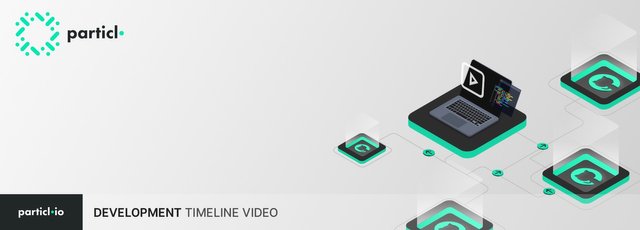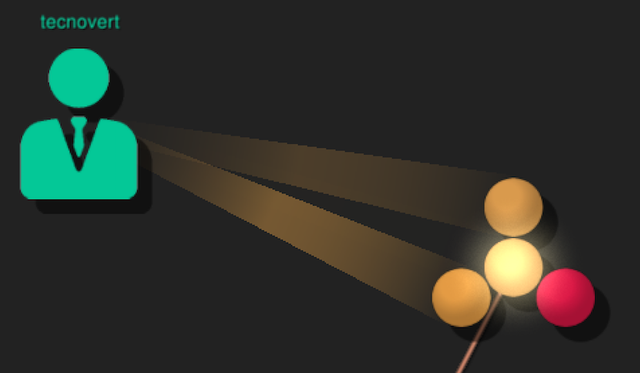Particl Development Timeline Video

The Particl project has now been around for around 14 months. Within this short period of time, a lot has been accomplished by our development team, as documented in these two recapitulation articles (1, 2) as well as our now bi-weekly Community Updates (1, 2, 3, 4, 5). In fact, the Particl project has grown into an impressive network full of technological innovations. While some of the innovations are currently available on mainnet (Particl Desktop, cold staking, Ledger staking, Confidential Transactions, atomic swaps, and etc), most of the really impressive stuff (decentralized marketplace, trustless MAD escrow system, decentralized project governance, decentralized marketplace governance, staking pool, etc) either currently only resides on Particl’s public testnet or in developers’ personal repositories and still under heavy development.Some crypto rating agencies have taken notice of the prowesses our development team has pulled off. For example, Particl consistently ranked in the top 7 (currently ranked 6th) of Darpal’s monthly reports in 2018, a Github code rating agency, for the entire year of 2018. Particl is consistently ranked first among privacy coins as well as decentralized marketplaces! CryptoMiso, another Github monitoring rating group, currently ranks Particl in 15th place out of a total of 867 ranked projects within the last 12 months.
What if there was a way to visualize Particl’s development history in a more user-friendly way than to manually scan Github stats?
With the help of the open-source Github visualizer software Gource, we produced a series of videos demonstrating the constant and impressive work our development team has put into Particl since its inception (and the weeks leading up to it).In the following videos, you will see visualizations of Particl’s Github activity throughout time. Each moving user you see is a developer that has had activity recorded on one of the displayed repositories. Remember, as we constantly keep our codebase up-to-date with Bitcoin’s, this time-lapse video is a testament to the cooperation of our 2 teams display. Rather than being in competition with Bitcoin, Particl is a privacy-focused compliment to Bitcoin, and you can see that immediately with both teams represented and developing in-step with one another.
General Overview of the Particl Network
Links: Particl-Core, Particl-Desktop (market branch), Particl-Market,  Partyman (cold staking), Copay, OMP-Lib, Atomicswap, Particl-Bitcore-Lib, Bitcore-Mnemonic, Particl-Bitcoind-RPC, Particl-Bitcore-Message, Particl-Bitcore-Node, Blue-App-BTC, Particl-Insight-API, Particl-Insight-UI, Partsuite_Partd, Partsuite_Partutil
Partyman (cold staking), Copay, OMP-Lib, Atomicswap, Particl-Bitcore-Lib, Bitcore-Mnemonic, Particl-Bitcoind-RPC, Particl-Bitcore-Message, Particl-Bitcore-Node, Blue-App-BTC, Particl-Insight-API, Particl-Insight-UI, Partsuite_Partd, Partsuite_Partutil
What Am I Seeing in This Video?

Tecnovert, Particl’s Lead Core Developer & Cryptographer, making some commits
This Particl network overview video regroups all of the major development-based repositories, meaning that non-development repositories such as the particl.io, branding, whitepaper, as well as a few others are excluded. It shows Particl developers’ Github activity over time. Each moving user is a Github user that has contributed to one of the listed repositories, and each “ray” being shot from these users is a contribution. Furthermore, we have highlighted Particl developers so that their names and pictograms appear in green whereas Bitcoin Core developers appear as a white/grey name color.Each “node” represents a folder within one of our repositories and their link to other folders are identified by “branches”. Every folder within the same repository is represented under the same “master branch”.Note: None of these visualizations displays all the work done by the development team. Indeed, each repository is represented by a single Git branch, meaning that work accomplished on other git branches is not reflected in the animation. For example, Particl Desktop’s visualization is set up on the “market” branch, which is the most up-to-date but doesn’t display the work being done on the feature-multiwallet-v2 and proposals branches (see active branches here).
Observations
What is particularly interesting to notice is just how much the Bitcoin Core developers are contributing, indirectly, to the Particl project. In fact, because we constantly update our codebase to match the latest version of Bitcoin Core, we benefit from all the ongoing research and development going on over the Bitcoin network.Moreover, keeping our codebase up-to-date not only grants the Particl blockchain with all the security, performance, stability, privacy, and utility enhancements made to the Bitcoin blockchain, but it also enables our development team to fork any interesting Bitcoin product and adapt it to work over the Particl network.Particl Copay, our mobile wallet currently available on Google Play and for desktops, is a great example and demonstration of this concept. In fact, Copayhas initially been developed by Bitpay and was designed to be a Bitcoin-only mobile wallet. It was, however, forked by the Particl development team to give its community an easy-to-use mobile wallet that could also double as a tool to generate and use Particl multi-signature addresses, a feature that, to this day, is still only available on Particl Copay.
Particl Desktop & Particl Market From Up Close
We’ve also isolated three of the repositories shown in the Particl Network visualization and zoomed in to show in greater details the work being accomplished. These three repositories are the three main ones in the project and are the ones which are being developed the most to accomplish our vision.
Particl Desktop
Particl Desktop (market branch)
Particl Market
Particl Market (develop branch)
Particl Core in Comparison to Bitcoin Core
Bitcoin Core x Particl Core
In the video above, you can compare both Bitcoin’s (left) and Particl’s (right) core codebases. This visualization really highlights the relentless work accomplished by our Lead Core Developer & Cryptographer Tecnovert as he adds features on top of the Bitcoin codebase at a record speed while constantly keeping Particl’s codebase version in sync with that of Bitcoin’s.
Thanks to Paul Schmitzer.
